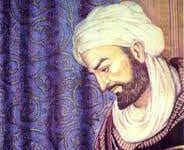Historical Background to Murder in the Cathedral
Historical Background to Murder in the Cathedral
Historical Background to Murder in the Cathedral
The term ‘Background’ refers to the thing, event, or circumstance basing upon which something else takes birth, grows or survives. T. S. Eliot’s play ‘Murder in the Cathedral’ is a historical as well as religious play which is based on an apparent historical event that dates back to the late twelfth century. The play portrays the murder of Thomas Becket the Archbishop of Canterbury in 1170 A.D. at the behest of King Henry II, following a conflict between the church and the royalty. Through this play, the playwright T.S. Eliot glorifies the life of Thomas Becket and the cause of Christianity. The play was composed for the occasion of the Canterbury Festival of June 1935, the purpose being to secure funds for the Parish. The outline of the historical background of the play is as follows:
Thomas Becket was born in London in 1118 A.D. of Norman parentage. He was trained in Knightly exercises, studied theology and worked for a time in a lawyer’s office. He became a personal friend and confidant of Henry II, the King of England who appointed him to the high office of Lord Chancellor. Thomas was loyal and devoted to the king. In 1162 Henry II was involved in a conflict with the clergy over the question of whether the king had legal authority over the clergy. When the king appointed Thomas to the post of Chancellorship, the king hoped that Thomas Becket would continue his loyalty to the king.
Thomas accepted the post reluctantly. Once he became the Archbishop of Canterbury, Thomas reversed his position and opposed the king’s measures against the special authority of the clergy. The struggle between Henry II and Thomas Becket became a long and bitter one. Thomas was finally forced into exile. He lived in France for seven years. He returned to England after a reconciliation with the king, but the peace was of short duration.
By custom, the Archbishop of Canterbury alone had the power to crown a new king in England and this custom was supported by a Papal Mandate to protect Canterbury’s rights. While Thomas was in exile, Henry II became impatient to have his eldest surviving son crowned as successor in his own lifetime, and ordered the Archbishop of York to crown the young prince. In June 1170 A.D. this ceremony was duly performed. On the other hand Thomas Becket, the Archbishop of Canterbury with the Pope’s support immediately threatened an ‘interdict’ (an order closing all the churches of England).
The king in a fit of anger made a hasty decision and sent four cruel Knights to murder Becket. They followed the king’s behest duly and murdered Thomas Becket on December 29, 1170, A.D. He met his death with splendid courage. Later on, his grave becomes the most famous shrine in Christendom. Thomas Becket was canonized in 1173 A.D.
Basing on this historical tragic event, the playwright T. S. Eliot has written out his ‘Murder in the Cathedral’. But the event is not the transcription (exact copy) that he deals with within the play. He has fused the historical background with the idealistic philosophy of Christianity and gives dramatic shape to the event. He has trimmed everything superfluous keeping the background as the basis, T. S. Eliot shows that the saint suffered not for his own good but for the good of humble suffering humanity. But as a play, it suffers from some striking flaws as there is no conflict, suspense, no real hero, no comic interlude, and no full-length characterization. Despite this, it may be said that such flaws are merely minor blemishes in a play of much popular appeal. 0 0 0
Historical Background to Murder in the Cathedral
Read More: Renaissance Elements in Doctor Faustus
Historical Background to Murder in the Cathedral
N. B. This article entitled ‘Historical Background to Murder in the Cathedral’ originally belongs to the book ‘World Drama Criticism‘ by Menonim Menonimus. Historical Background to Murder in the Cathedral
Related Searches:
- Historical Background of Murder in the Cathedral
- Brief by Outline Historical Background to Murder in the Cathedral
- T S Eliot’s Murder in the Cathedral Historical Background
- Philosophy in Existential Play
Books of Literary Criticism by M. Menonimus:
- World Short Story Criticism
- World Poetry Criticism
- World Drama Criticism
- World Novel Criticism
- World Essay Criticism
- Indian English Poetry Criticism
- Indian English Poets and Poetry Chief Features
- Emily Dickinson’s Poetry-A Thematic Study
- Walt Whitman’s Poetry-A Thematic Study
- Critical Essays on English Poetry
- Tawfiq al-Hakim’s Novel: Return of the Spirit-An Analytical Study
- Tawfiq al-Hakim’s Novel: ‘Yawmiyyat Naib Fil Arayaf’-An Analytical Study
- Analytical Studies of Some Arabic Short Stories
- A Brief History of Arabic Literature: Pre-Islamic Period …











